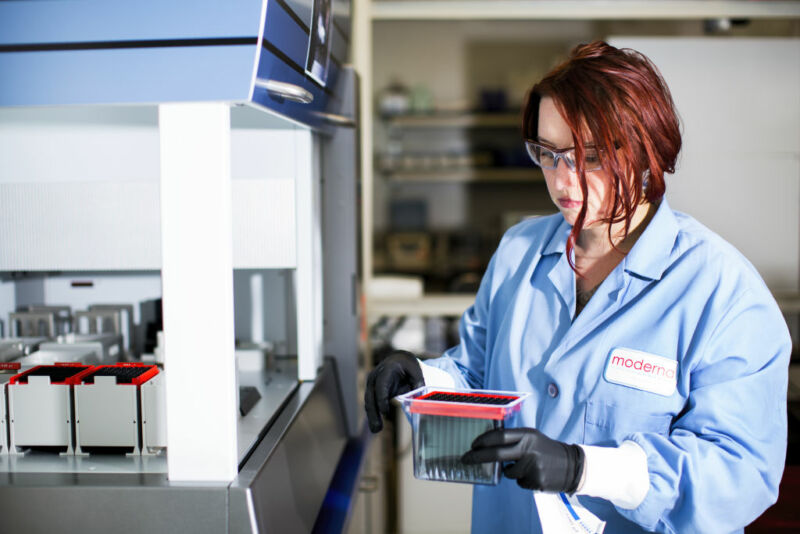US starts safety testing of coronavirus vaccine

Enlarge / A research associate works at the Moderna Therapeutics Inc. lab in Cambridge, Massachusetts. (credit: Bloomberg/Getty Images)
On Monday, the Associated Press reported watching the first safety tests of a vaccine against SARS-CoV-2, the coronavirus that recently spread into a global pandemic. Considering we didn't even know the virus existed five months ago, this represents remarkable progress. But the technology that allowed such rapid development is relatively untested at the scale we'd need for a global vaccine.
How to make a vaccine quicklyMost vaccines use viruses or bacteria that are either treated so that they are unable to reproduce or damaged in a way that ensures that they reproduce very poorly. These vaccines are generally very effective, as they expose the immune systems to many of the proteins normally made by the pathogen, thereby ensuring a robust immune response. The downside, however, is that you have to be able to isolate and manipulate the bacteria or virus, and then you have to grow and purify it at scale. This means a significant amount of time is needed to build up a production stock for widespread use.
Many viruses, however, have a limited number of proteins on their surface that the immune system typically responds to. For these viruses, it's possible to focus on the genes for these proteins, either cloning them into a harmless virus or producing large quantities of the proteins themselves. This still involves challenges with large-scale production but avoids the steps involved with isolating the pathogen and figuring out how to grow large quantities safely.
Read 12 remaining paragraphs | Comments